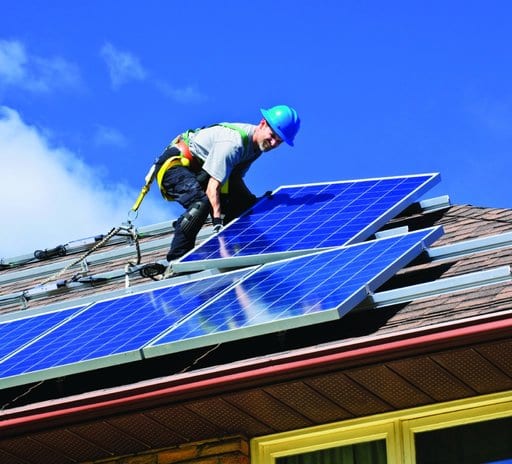Victoria’s solar households look to have notched up a win this week, after the state Labor government announced the introduction of multiple time-of-use tariffs for rooftop solar exports to the grid – a first for state governments in Australia – to better reflect the value of the state’s distributed solar generation.

State minister for energy Lily D’Ambrosio said on Wednesday the Andrews government had given the nod to multiple time-of-use solar FiTs ranging from peak, to off-peak and shoulder, which would better reflected current electricity pricing.
This would mean that solar households would be rewarded slightly more for their rooftop solar generation – up to 8c/kWh – if they sent it to the grid during peak periods.
The government also said that the minimum feed-in tariff – while yet to be determined by the state’s pricing regulator – was expected to go up 20 per cent, or from 5c/kWh to 6.5c/kWh, to better reflect their PV system’s environment value.
The decision follows the September findings of the final report from Victoria’s Essential Services Commission into the Energy Value of Distributed Generation.
The report recommended changes to tariff structures to reflect the true value of rooftop solar and other small renewable electricity generators – to the grid, to the environment, and to society.
Marking a first among Australian regulators, the ESC report concluded that the state’s current feed-in tariff design did not adequately reward the value of distributed energy generation on a number of levels.
It also said the tariff should be changed to factor in time of export, location of generator, and avoided greenhouse gas emissions – a finding it flagged in its draft report, published in May.
“Victorians should be fairly compensated for the power they generate – plain and simple,” D’Ambrosio said in a statement. “This is the first time the tariff has been increased in the last six years, rising by approximately 20 per cent. It fell every year under the Coalition.
“Households will now be compensated through the most cost effective and fairest system available, which is through a time-of-use feed-in tariff.”
Not everyone is convinced this is a win for consumers, though, and suggest D’Ambrosio’s claims of a 20 per cent rise in the tariff could be more accurately described as a reversal of the 20 per cent cut imposed by the ESC in its 2015 price determination.
The state’s Greens party says Labor’s announcement is a distraction from the fact that tens of thousands of Victorian solar households will suffer bill shock when their solar tariff is cut from a premium rate to just six cents.
They say a family with a 2.5kW system, which currently earns an average of around $300 a year for the power they feed back into the grid, will get just $75 next year when the government cuts the tariff again.
“This is a ripoff. 80,000 homes and businesses will see hundreds of dollars added to their bills,” Greens energy spokesperson Ellen Sandell said in comments emailed to One Step.
“Power companies will love this change. They will take your excess solar power for 6 cents and sell it to your neighbour for 25 cents, making a huge profit at solar householders’ expense.
“The plummeting price of batteries and solar, along with these puny payments for solar, are driving people to disconnect from the grid. Instead we should be encouraging and rewarding people for installing solar and staying on the grid.
“The government is trying to pull the wool over people’s eyes, saying it’s an increase when in fact it’s a cut,” Sandell said.
Industry group Solar Citizens was slightly less scathing, saying that while the changes would result in “relatively modest gains for solar owners”, they would also “set the stage for a fairer and more reflective assessment” of the value rooftop solar.
“Household rooftop solar offers incredible benefits to our electricity grid, providing cheaper, cleaner, more efficient energy during times when demand – and costs – are greater,” said Solar Citizens consumer campaigner, Reece Turner in a statement on Wednesday.
“Coupled with battery storage, rooftop solar also has the potential to provide a more robust, decentralised electricity supply. Until now, these values have not been realised,” he said.
“This Victorian announcement sits in stark contrast to the flailing policies of other States, particularly NSW which has a zero minimum feed-in price for solar and in South Australia where the regulator is proposing to remove the minimum feed-in price.
“The Queensland Government is sitting on a report it commissioned into a fair price for solar but the draft report failed to recommend any changes.
“This is a great first step however other benefits of solar lie in a more efficient electricity grid.
“The Victorian Government has indicated these benefits should also be realised and we look forward to the next stage of the inquiry,” said Turner.
The Andrews government has also taken up the regulator’s recommendation that annual minimum rates for feed-in tariffs should permanently move from calendar years to financial years to allow retailers time to adjust their systems. This will commence from 1 July 2017.
But it said that some of the ESC’s recommendations would not be adopted, as they would add unnecessary complexity into the feed-in tariff scheme.
Part two of the ESC review will look at how investment in local distributed generation can reduce future costs of network poles and wires – and is expected to be tabled in February 2017.
A spokesperson for the state energy minister said that provided the report determined there was value added to the grid by distributed solar generation, then the expectation was that a further rise in the minimum feed-in tariff would be recommended. The ESC is expected to make its final pricing determinations early next year, in time for them to be applied on July 1, 2017.
This article was originally published on RenewEconomy sister site One Step Off The Grid. To sign up for the weekly newsletter, click here.








